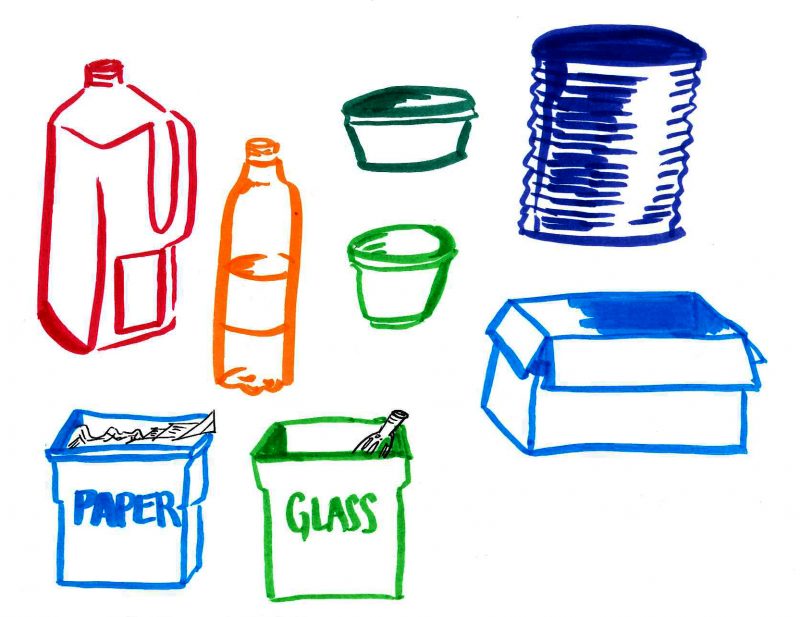This February, Trinity University participated in Recyclemania, a national competition among college campuses to promote waste reduction held nationally.
Larger schools often see the event as a competition with their rivals, but according to Sharon Curry, sustainability coordinator for Campus Planning and Sustainability, Trinity’s involvement is on a much smaller scale.
“Recyclemania is a national collegiate competition that universities can use for benchmarking waste and recycling,” Curry said. “[For Trinity,] it’s an eight-week period where we measure and quantify all the waste and recycling on campus.”
The competition is already underway, but will continue until the end of March.
“Colleges are ranked week-by-week according to various factors, including recycling rate — a percentage calculated by dividing the weight of recycled materials by the weight of total waste — as well as waste minimization — pounds of waste per-capita,” wrote Evan Johnson, sophomore student assistant for Campus Planning and Sustainability, in an email interview.
Monica Lampton, sophomore student assistant for Campus Planning and Sustainability, explained that to promote this event, the office tables every Wednesday during Nacho Hour during February and March in Coates University Center. These efforts are aimed at increasing the campus’s low recycling rates.
“We’re choosing to participate in it because we need to recycle more. Trinity’s annual recycle rate for the 2016 fiscal year was about 12.3 percent, which is really low,” Lampton said.
The university’s rates are considerably lower than Texas’ statewide recycling rate, which is in the low twenties, according to Curry. This low recycling pattern tends to continue even during campus awareness events.
“Last year, Trinity placed 155th out of 191 schools in the nationwide Recyclemania standings, with a recycling rate just under 20 percent,” Johnson wrote.
As a part of Recyclemania, Campus planning and Sustainability compares the amount of recycling coming out of each residence hall.
“We weigh all the waste that comes out of the residence halls — where we can’t weigh, we count,” Curry said. “We make an effort during these eight weeks to break it down and see where it’s coming from.”
In addition to the competition, the office is also changing the way in which Trinity does its recycling.
“In the past, we’ve done what is called source separation, where we’ve collected every stream separately, and that results in the best recycling,” Curry said. “However, we’ve not seen the results that we want to see, so we’re trying to make it easier by combining bottles and cans all into one stream.”
This transition will involve the combination of plastic, aluminum and glass into one receptacle, which makes it easier for the students to recycle.
“It’s not just trying to get those metrics as far as in what we recycle and how we recycle, but it’s also to increase awareness,” Curry said. “Between week one and two on campus, we saw a 10 percent increase in recycling on campus, which is great. … Increasing the awareness of waste will help us do a better job at reducing waste.”
As indicated by the early results of the intradorm competition, Recyclemania has already raised awareness for many on campus. Johnson explained why this participation is crucial for the university.
“The great thing about waste management is that there is always room for improvement,” Johnson wrote. “Ideally, everyone on campus would recycle, but for whatever reason some people choose not to. Reaching out and convincing these people that recycling is not only worth it, but fairly easy to do here at Trinity, is vital to reducing waste on campus.”







